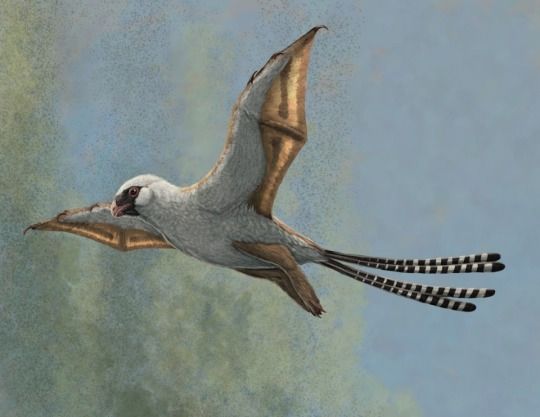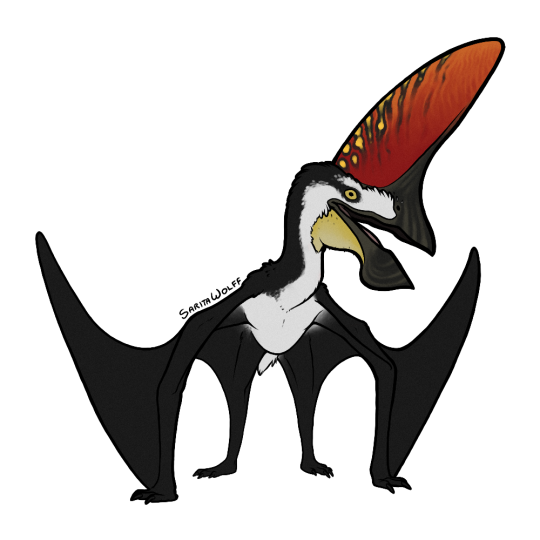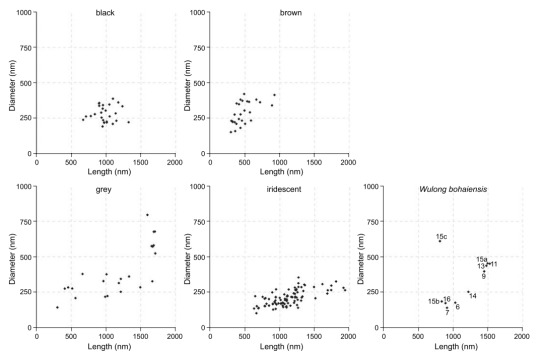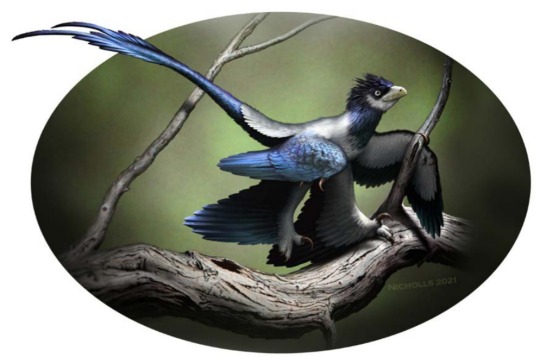#Melanosome
Text
Best Skin Pigmentation Removal Treatment in Nagpur at Twacha Aesthetic Clinic
What is the Basic Structure of the skin ?

Skin is the largest organ of a body. It is made up of two layer : Upper Epidermy & the lower Dermis. The lowermost layer of the epidermis is known as the basal layer. It contains organelles called melanosome. Melanosome contains cells called melanocyte which produce pigment called melanin.
#SkinHealth#Dermatology#Epidermis#Dermis#BasalLayer#Melanosome#Melanocyte#MelaninProduction#SkinAnatomy#SkinCare#HealthySkin#SkinFacts#OrganOfTheBody#SkinScience#Pigmentation#SkinProtection#SkinLayers#SkinBeauty#SkinFunction#SkinKnowledge
0 notes
Text
Spy in the field talking to their "guy on the computer" during a mission except the spy has adhd and keeps asking them Google stuff like "was Jonah Hill in Knocked Up" and "how do we know what colors dinosaurs were" while infiltrating secret lairs and fighting off goons.
#Wait this is literally just Archer lmao#Jonah Hill was in Knocked Up BTW#And with dinosaurs it's hmm... Melanosomes and other stuff#Adhd#post o' mine
18 notes
·
View notes
Text
youtube
12 notes
·
View notes
Text

Sketch of a courting Diplodocus based on potentially(?) found melanosomes
206 notes
·
View notes
Text
Round Three: Ambopteryx vs Caihong
Ambopteryx longibrachium

Artwork by Gabriel Ugueto, written by @i-draws-dinosaurs
Name meaning: Both wings with long arms
Time: 163 million years ago (Callovian stage of the Middle Jurassic)
Location: Haifanggou Formation, China
Look, evolution has done a lot of weird stuff to dinosaurs. It put penguins underwater, and did whatever the hall mamenchisaurid necks are, and game lambeosaurs a built-in face trumpet. But I would argue there is one group that represents dinosaur evolution at its most unhinged, and that is scansoropterygidae.
Scansoriopterygids were generally considered “weird little tree dinosaurs” in the 2000s, with long fingers to pick grubs out of bark or something. Then Yi qi swept along in 2015 and revealed that those long fingers were actually supporting membranous bat wings. With an extra bony rod (the “styliform element”) sticking out of the wrist to help support it, because well if you’re a dinosaur evolving bat wings why bother being normal about it after that? Although really, the dinosaurs did it first so bats actually have dinosaur wings.
Yi was sensational, but it was also extremely weird and completely unique. Even other scansoriopterygids didn’t have wing membranes, so the whole bat thing was a bit up in the air. Or not up in the air, as the case may be. But then along comes Ambopteryx, published in 2019, packing another set of skin wings, and the vindication of Yi is complete!
Ambopteryx preserves a styliform element and wing membrane, as well as a thick coat of feathers, and honestly out of a whole selection of dinosaurs I think these might be some of the most huggable in the lot. Obviously this whole wing membrane thing didn’t end up working out for them long term, but Ambopteryx is part of an incredible lineage that challenged what we thought was possible for dinosaurs!
Caihong juji

Artwork by @i-draws-dinosaurs, written by @i-draws-dinosaurs
Name meaning: Rainbow with big crest
Time: 161 million years old (Oxfordian stage of the Late Jurassic)
Location: Tiaojishan Formation, China
It’s always a special treat to hear the announcement of a dinosaur with known colours, because it gives the most direct impression of how truly stunning these animals would have been to witness in real life. And Caihong might just be the most spectacular of them all so far, described in 2018 from an immaculate full-body fossil that preserves detailed feathers! Caihong’s feathers are longer than some other floofy dinosaurs, and would have had the appearance of a luxurious mane along its neck. Not only that, the fossil preserves feather microstructures that in life would have made this dinosaur gloriously iridescent!
Now iridescent dinosaurs aren’t new, Microraptor has been decked out in fabulous starling-esque plumage for a while now, but Caihong absolutely takes it to the next level. Its whole body was covered in iridescent black, including the enormous tail, but the real star of the show are the platelet-like melanosomes found on the head, neck, and the base of the tail. Different from the usual iridescent melanosomes, the structure of these tiny organelles reflects brilliantly iridescent colours, like those on the heads of hummingbirds and particularly the bright purple feathers on the necks of the trumpeter family. Caihong would have put on an absolutely dazzling jewel-toned display in the treetops or on the forest floor of prehistoric China!
#dmm#dmm rising stars#dinosaur march madness#dinosaurs#birds#palaeoblr#birblr#bracket#march madness#polls#paleontology#ambopteryx#caihong#round three
472 notes
·
View notes
Text
Anchiornis

Anchiornis is a small paravian dinosaur from the Late Jurassic of China. It could grow to around 60 cm in body length with a wingspan nearly as wide, and weighed about 1 kg. In addition to the front wings, Anchiornis had long feathers on the hind legs, leading many scientists to call it a four-winged dinosaur. Thanks to an extremely well-preserved specimen, scientists have been able to study the melanosomes in the feathers and determine the full body colors and patterns of Anchiornis. The body was mainly black and gray and the primary feathers were white with black tips and patterns. It also sported a red crest on the top of its head.
118 notes
·
View notes
Text

Scientists determined the color of Inkayacu paracasensis from the melanosomes in its fossilized feathers. The penguin lived in Peru 36 million years ago. Its genus name means "Water Emperor" in Quechua, so technically it's a real-life Empoleon.
23 notes
·
View notes
Text

Archaeopteryx!
This fluffy boy was around 147 million years ago. Interesting fact, due to the fossilized colour-imparting melanosomes we know the color of the archaeopteryx feathers was black.
If you wanna learn more on this I learned this from this article: https://www.nature.com/ articles/ncomms1642
#paleoart#paleoartbutch#paleontology#archaeopteryx#fossils#dinosaur#dinoart#dinosaur art#fluffy boy#feathered dinosaurs#original art
135 notes
·
View notes
Text

#Archovember Day 3 - Tupandactylus navigans
There were at least two species of the Tapejarid pterosaur Tupandactylus: T. imperator (who I’ve drawn previously) and T. navigans. Of the two, T. navigans is smaller, with a straighter, more upright crest. (A 2021 study suggests that the two species could actually represent sexually dimorphic members of the same species, but more detailed study is required to support this.) Either way, Tupandactylus is known for its huge keratinous crest, and T. navigans especially for its sharp shark-fin profile. This large crest likely limited T. navigans’ flight ability, relegating it to spending most of its time on the ground, only taking short flights to evade predators.
In 2022, A specimen of Tupandactylus imperator was discovered to have very complex branching pycnofibers (feather-like filaments unique to pterosaurs) that were much closer to true feathers than previously thought possible in pterosaurs. This could be further evidence that feathers are a basal trait to Avemetatarsalians. Also, similar to Anchiornis, Tupandactylus has been found with preserved melanosomes. However, paleontologists did not attempt to infer the color of the animal, but merely noted that the melanosomes were varied between the skin of the crest and the pycnofibers on its skull, probably providing some sort of contrast for the head ornamentation. No doubt imperator’s smaller cousin navigans was similar.
Living in Early Cretaceous Brazil, Tupandactylus navigans had a diverse array of frogs, lizards, and invertebrates to prey on, including moths, lacewings, mayflies, scorpions, and solifugids. T. navigans could have also preyed on small dinosaurs and their eggs, such as Enantiornithine birds and the compsognathid Ubirajara. T. navigans would have shared its environment with many other pterosaur species, such as its cousin T. imperator, Arthurdactylus, Aymberedactylus, Brasileodactylus, Lacusovagus, and Ludodactylus.

(As I’ve drawn T. imperator previously, but not with its own size chart, I’ve chosen to include it as a bonus here so the two species can be compared. I’ve also updated my imperator design a bit, as it was drawn before the 2022 study.)

#my art#SaritaDrawsPalaeo#Tupandactylus navigans#Tupandactylus#Tupandactylus imperator#tapejarid#pterodactyloid#pterosaurs#archosaurs#archosauromorph#Archovember#Archovember2023
50 notes
·
View notes
Text
Basic Structure of the Skin?
Skin is the largest organ of the body. It comprises two layers: The upper epidermis & the lower Dermis. The lowermost layer of the epidermis is known as the basal layer. It contains organelles called melanosomes. Melanosome contains cells called melanocytes which produce a pigment called melanin.

0 notes
Text
Iridescent plumage in a juvenile dromaeosaurid theropod dinosaur
A recent study (13th June 2023) on Wulong bohaiensis (DNHM D2933) using microscopes to observe Preserved melanosome imprints in the feathers of Wulong.
Wulong bohaiensis (DNHM D2933) a juvenile specimen and an illustration showing feathers with preserved melanosome imprints.

Preserved melanosome imprints characteristic of each sample from Wulong bohaiensis

Melanosome length against diameter for each colour category

Results for Colour classification posterior probabilities

This means, according to this study, Wulong bohaiensis was covered in an iridescent and grey plumage.
long Feathers on the tail, feet and hands were iridescent while the feathers on the hips/back, abdomen and portions of the hands were grey.
Construction of Wulong bohaiensis using data from this study, Artwork by Robert Nicholls.

Source-
51 notes
·
View notes
Text

One of the games I bought while in isolation was Prehistoric Kingdom. Which is basically Planet Zoo, only with (accurate! Don't get me started on the fucking Jurassic Park/World movies/games!) non-avian dinosaurs and prehistoric mammals like mastodons, woolly rhinos, and cave lions.
The game's still in early access, but I've read that much of it is functional, so I bought it on sale. I just fired it up tonight to see what it's about and figure out how it works. Which was a little bit difficult because the recent major update of it broke the tutorial, so the tutorial is currently disabled. But as it turns out, at least in terms of landscape sculpting and building stuff, much of it works an awful lot like Planet Zoo -- only with added (and awesome) scaling functionality, not to mention being able to turn off the grid and to paint entire swaths of trees/shrubs instead of placing things one-by-one -- so between that and the in-game help, I could figure out most things.
And then I bred myself some psittacosaurs, shown in the pic, because they're among my favorite non-avian dinosaurs, and plopped them in a habitat....and....Well, a bit of nerding ahead. But before I get to that, I give the game a thumbs up so far, and it has tons of potential ahead of it. I'll probably put the game in unlimited, creative sandbox mode and just check out and build for every dino species in the game before going back and actually playing the game in its challenge mode, where you have to unlock stuff and don't get unlimited money.
Now for the nerding. My psittacosaurs promptly escaped from their habitat because I didn't bother with any natural barriers to block the invisible fences I laid. LOL But that's OK because I just wanted to see what they looked like in the game, given that we actually know a lot about what they looked like in real life in terms of soft tissues and pigmentation and such.
And it turns out that they did a pretty good job with the psittacosaurs! They got the dorky bristles at the base of the tail and the bizarre-o head correct. And they got the countershading right! That is, darker on top and lighter on the belly, which is typical for animals that live in dense forests. We know that psittacosaurs had this because there've been some specimens preserved with soft tissues, which included skin which included preserved melanosomes, so we could find out about the coloration of these buggers. So, the devs got the countershading as well as the subtle stripes/spots correct. I'd say they still look a bit too shiny/plastic-y, so they probably need to crank down the speculars a little, but otherwise? Pretty damn good.
I'd read that the developers of this game were trying to be more scientifically accurate, as opposed to...you know what...but I'm still pretty impressed. Can't wait to see if they did a similarly good job with the dilophosaurs, which are my favorite non-avian dinos. (Fucking Jurassic Park...Dilophosaurs are not tiny, venom-spitting frilled lizards, for fuck's sake, and yes, that was well-known in the early 90s, so there's no excuse!)
#non sims#prehistoric kingdom#for the record my favorite dinosaurs of all#are a tie between cassowaries and corvids#because birds are dinosaurs
17 notes
·
View notes
Text
2 episodes in Prehistoric Planet season 2, and I must say, the animation is incredible. Top notch. Every animal feels heavy and real...
But if Favreau and his philosophy of 'grey and drab = real' could actually fuck off to go ruin another genre of cinema and leave dinos and animals at large alone, that'd be great!!
Every dino is some shade of grey or brown. Dashes of reddish-rust colour aren't noticeable or enough. Have you seen... birds? Have you seen... lizards? They're not all sand coloured you know?? Not every baby needs to have a quail pattern and colour palette either.
We know things like some raptors having *iridescent* plumage.
When we applied our method to the melanosomes of Anchiornis, the results were striking. Our statistical predictions indicated that the feathers that covered much of the creature's body were mostly gray. The long feathers on the animal's arms and legs, in contrast, were unpigmented by melanosomes and thus white, except for the melanosome-laden tips, which we predicted were black. (Modern birds often have black-tipped wing feathers. The melanin, in addition to coloring the feathers, also fortifies them against battering winds. Perhaps Anchiornis benefited from this strengthening property of melanin, too.) Most surprising, the feathers on the crown of the head contained impressions of round melanosomes—the “meatballs”—that would have given Anchiornis a ruddy crest. All told, this combination of colors made for a spectacularly flamboyant creature.
It was not long before we discovered evidence of iridescence in an actual dinosaur—a crow-size creature from China with wings on all four limbs. Dubbed Microraptor, it was a primitive cousin to Jurassic Park's Velociraptor. The movie depicted Velociraptor with scaly skin, but scientists now know that both these dinosaurs were, in fact, covered in feathers. In Microraptor, the preserved feathers contain long, sausage-shaped melanosomes arranged to bend light in eye-catching ways. Its plumage thus would have been black, with the same shiny sheen as a crow's. Microraptor is not the only extinct creature now known to have had that rainbow shimmer. Jennifer Peteya of Oberlin College and Ghent's Shawkey have described shimmering iridescence in an enantiornithine bird, called Bohaiornis, and a Jurassic theropod with a big, fan-shaped tail, named Caihong.

Source
Let the artists be creative too, come on. Watching the show saddens me at times when a new dino comes in looking so alive but the exact same grey muddled mix of non-colour.
41 notes
·
View notes
Text
everytime i hear of a new paper about melanosome preservation in dinosaurs its like. Will To Live Restored. 20+ Willpower
#when i tell you paleontology and birds stopped me being suicidal im not fucking around!#i NEED to stay alive no matter how hard it is because ...oou..h.....Dinbosaur news :) We are learning stuff everday :)
14 notes
·
View notes
Note
is there any evidence in the fossil record as to when we first see iridescent feathers? idk if that’s the right word i mean like starling type plumage / non pigment based color? i know we’ve had fossilized melanosomes but outside of like , amber is there any way that the structure of feathers could be preserved such that we could see if they were shiny and green or whatever
So the feathers that can do iridescent color are pennaceous feathers, which are found in Pterosaurs, so... sometime in the Triassic
129 notes
·
View notes
Text
Curated List of My Tumblr Posts on Paleontology, Classification, Doraemon, etc.
I don’t currently take asks on this blog, but over the years I’ve accumulated a good amount of material on here that I essentially haven’t posted anywhere else. Given that finding old posts on Tumblr can be a difficult and arduous task, I’ve decided to assemble a curated selection of links to my posts that I think are of particular interest (whether on a general or personal level). These are often posts that have been especially popular, posts that I especially enjoyed writing, or both. Yes, I’m including the Doraemon reviews. 😛 For ease of access, I have also replicated this list on a page on this blog, which I will try to keep updated as I deem necessary.
Paleontology Resources
What are some good introductory resources for dinosaur paleontology?
What are some good YouTube channels about paleontology? (needs updating)
Some ways to access paywalled scientific papers (and why I won’t repost published phylogenetic figures on @new-dinosaurs)
What should one major in college to get into paleontology?
How do I make phylogenetic diagrams?
How to subscribe to the Dinosaur Mailing List
Specific Dinosaur Questions
How flexible are dinosaur tails?
What types of dinosaurs have feathers?
Wasn’t there a study showing that feathers were not an ancestral trait of dinosaurs?
How reliable are melanosomes for reconstructing the colors of extinct dinosaurs?
Why does paleoart of feathered dinosaurs tend to show the tip of snout unfeathered?
Is it true that non-avian dinosaurs couldn’t roar?
Which dinosaurian herbivores are foregut fermenters and which ones are hindgut fermenters?
When did dinosaurs evolve hollow bones?
Could sauropods swim?
Can any theropods pronate their hands? (And how about other reptiles?)
Were giant maniraptoriforms likely to have been featherless?
Did flightless non-avialan pennaraptorans have feather barbules?
Would Microraptor and Anchiornis have had trouble walking due to their large hindlimb feathers?
What do we know about the social and reproductive behaviors of dromaeosaurids?
Did bird ancestors evolve flight from the ground up or trees down? How might flight have evolved from the ground up? Do we have extant analogues for such a process?
How do we know birds are actually dinosaurs, and that we haven’t been misled by convergent evolution?
Why do birds have backward-pointing dewclaws?
What is the most likely phylogeny of modern birds?
Are eider ducks the fastest animals in the world?
Were there penguins in the Cretaceous?
Why do bateleur eagles have short tail feathers?
Do all owls have asymmetrical ears?
Are falcons closely related to parrots?
How many times did poison evolve in songbirds?
Taxonomy, Nomenclature, and Phylogenetics
How do you pluralize genus/species names?
What is the phylogenetic species concept?
What is wrong with ranked/Linnaean taxonomy?
If birds are reptiles, shouldn’t tetrapods be considered fish?
Should we avoid calling birds dinosaurs because they were not traditionally called dinosaurs?
How is phylogenetic nomenclature reconciled with the fact that species must have evolved from other species?
What is a synapomorphy and how do we identify one?
How often do morphological and molecular phylogenetics agree?
General/Other Biology
Should the study of birds be included under herpetology?
Why is monogamy more common in birds than in mammals?
We don’t know what ichthyosaurs and sauropterygians are (needs updating)
How do reptiles drink?
How to identify a rodent skull
Why do mammals have ear flaps?
Could a mammal evolve as many neck vertebrae as a bird?
How can you tell the position of an animal’s ears by looking at its skull?
What is the difference between mesothermy and endothermy?
Why has the "Handicap Principle” been disputed?
Does any organic material remain in fossils?
Does it worry me that paleontologists will run out of fossils to discover?
What do I think about using humor in scientific outreach?
Just for Fun
Meme about fossil bird books
Fusion is a cheap tactic to make weak reptiles stronger
Meme about horses in geology
What are some works of paleo-fiction that I enjoy? (needs updating)
What are some webcomics about extinct animals that I enjoy? (needs updating)
List of science-themed music artists (needs updating)
Phylogeny (“Under the Sea” parody)
We don’t talk about Spino
Are there non-talking horses in Equestria (from My Little Pony: Friendship is Magic)?
Hilda and the nature of revelations
Doraemon
Movie review: Nobita’s Dinosaur (1980) and Nobita’s Dinosaur (2006)
Movie review: The Records of Nobita, Spaceblazer (1981) and The New Record of Nobita’s Spaceblazer (2009)
Movie review: Nobita and the Haunts of Evil (1982) and New Nobita’s Great Demon (2014)
Movie review: Nobita and the Castle of the Undersea Devil (1983)
Movie review: Nobita’s Great Adventure into the Underworld (1984) and Nobita’s New Great Adventure into the Underworld (2007)
Movie review: Nobita’s Little Star Wars (1985) and Nobita’s Little Star Wars 2021 (2022)
Movie review: Nobita and the Steel Troops (1986) and Nobita and the New Steel Troops (2011)
Movie review: Nobita and the Knights on Dinosaurs (1987)
Movie review: The Record of Nobita’s Parallel Visit to the West (1988)
Movie review: Nobita and the Birth of Japan (1989) and Nobita and the Birth of Japan (2016)
Movie review: Nobita and the Animal Planet (1990)
Movie review: Nobita’s Dorabian Nights (1991)
Movie review: Nobita and the Kingdom of Clouds (1992)
Movie review: Nobita and the Tin Labyrinth (1993)
Movie review: Nobita’s Three Visionary Swordsmen (1994)
Movie review: Nobita’s Diary on the Creation of the World (1995)
Movie review: Nobita and the Galaxy Super-express (1996)
Movie review: Nobita and the Spiral City (1997)
Movie review: Nobita’s Great Adventure in the South Seas (1998)
Movie review: Nobita Drifts in the Universe (1999)
Movie review: Nobita and the Legend of the Sun King (2000)
Movie review: Nobita and the Winged Braves (2001)
Movie review: Nobita in the Robot Kingdom (2002)
Movie review: Nobita and the Windmasters (2003)
Movie review: Nobita in the Wan-Nyan Spacetime Odyssey (2004)
Movie review: Nobita and the Green Giant Legend (2008)
Movie review: Nobita’s Great Battle of the Mermaid King (2010)
Movie review: Nobita and the Island of Miracles (2012)
Movie review: Nobita’s Secret Gadget Museum (2013)
Movie review: Stand by Me Doraemon (2014)
Movie review: Nobita’s Space Heroes (2015)
Movie review: Nobita’s Great Adventure in the Antarctic Kachi Kochi (2017)
Movie review: Nobita’s Treasure Island (2018)
Movie review: Nobita’s Chronicle of the Moon Exploration (2019)
Movie review: Nobita’s New Dinosaur (2020)
Movie review: Stand by Me Doraemon 2 (2020)
Ranking the Doraemon movies (1980–2022)
Where to find Doraemon in English
20 notes
·
View notes